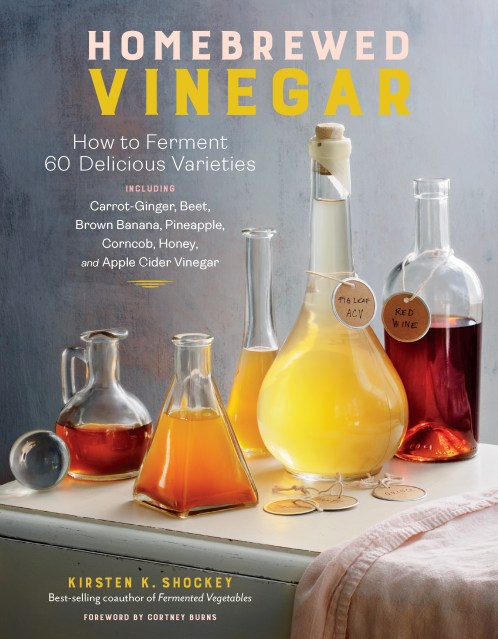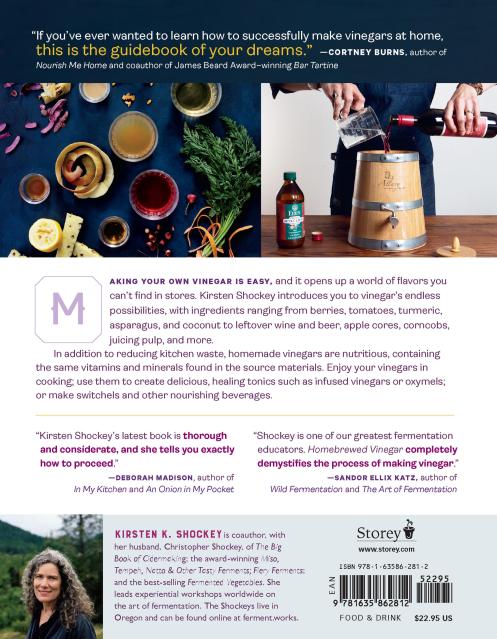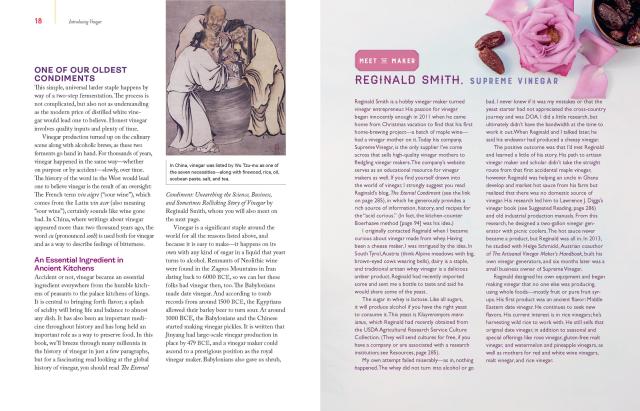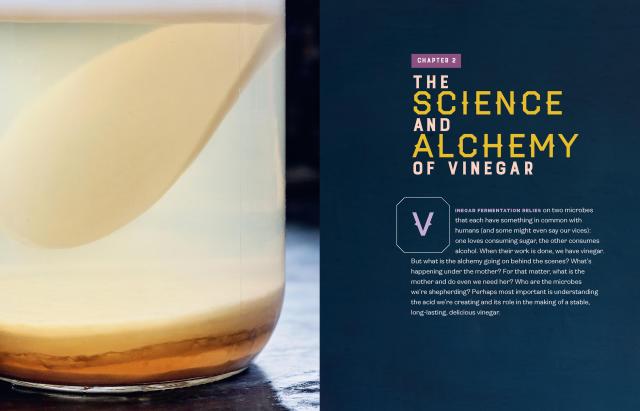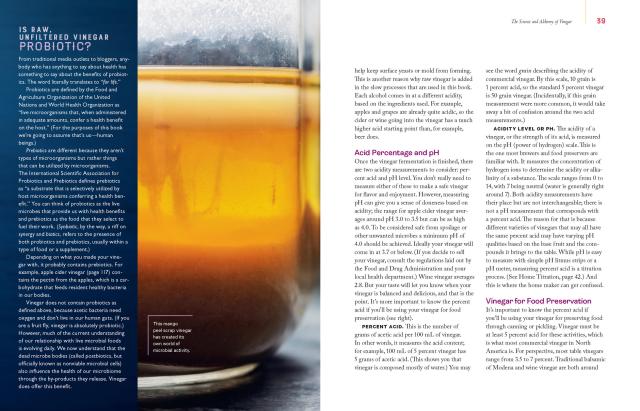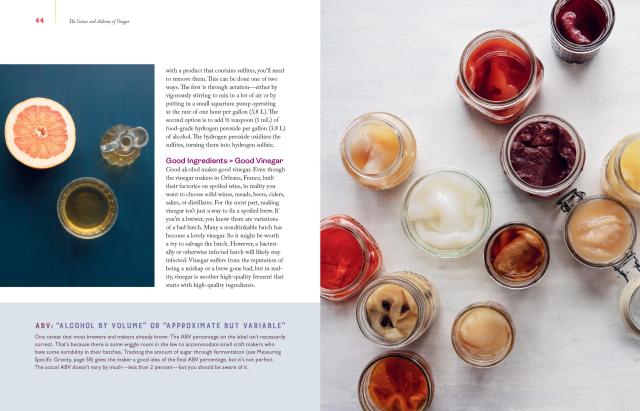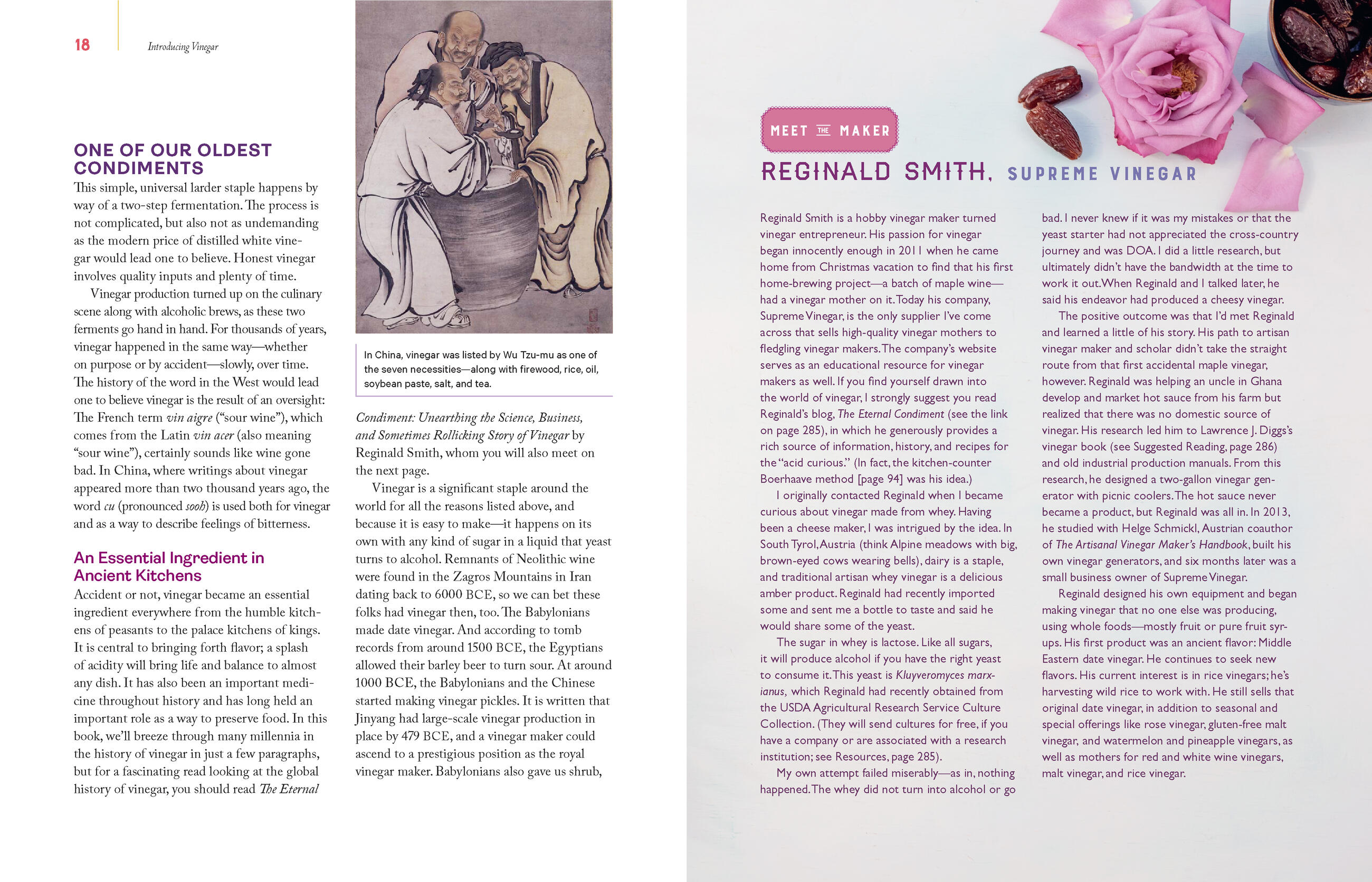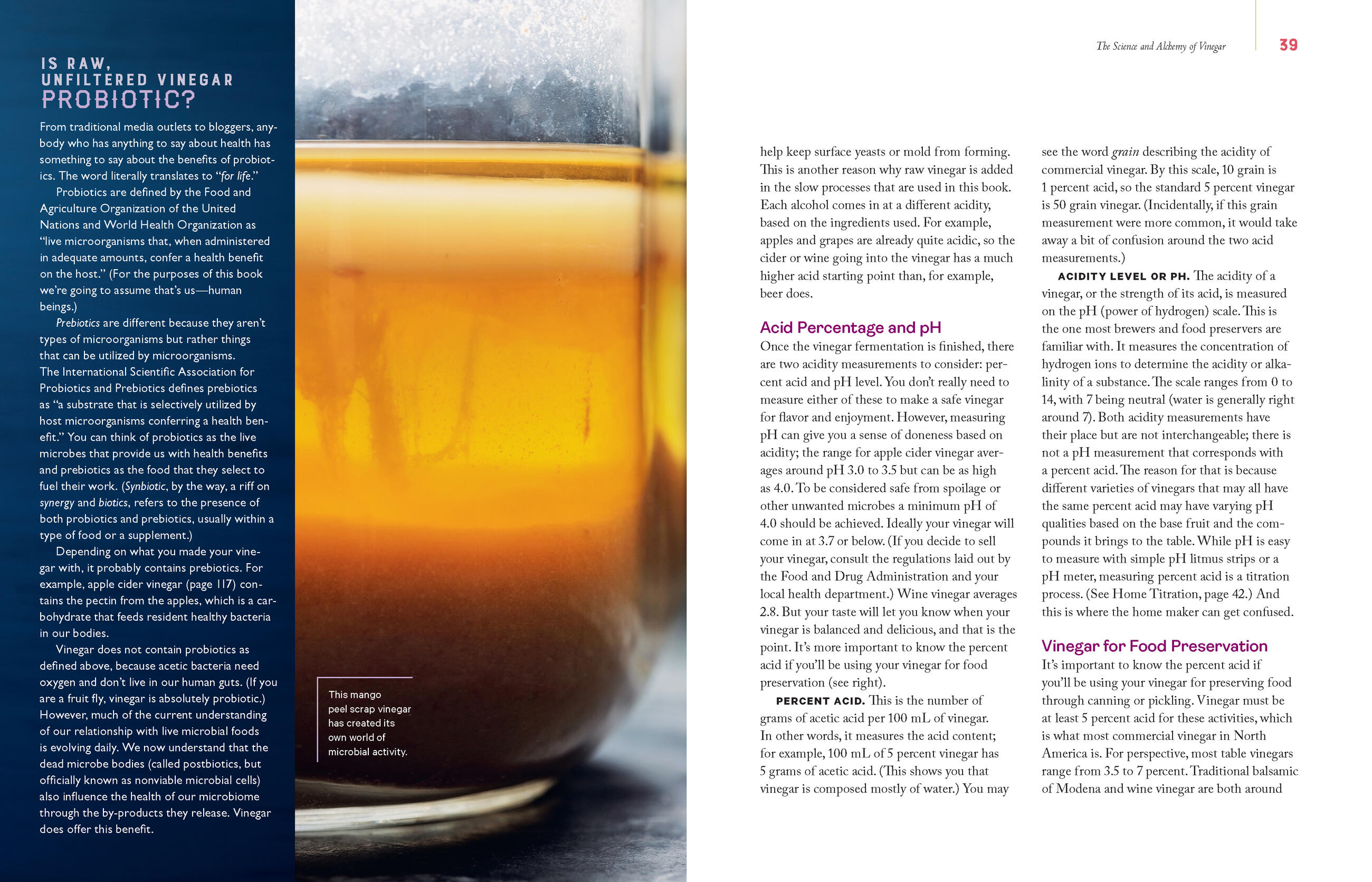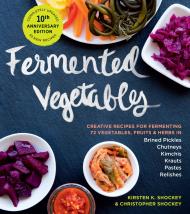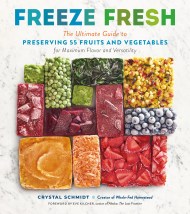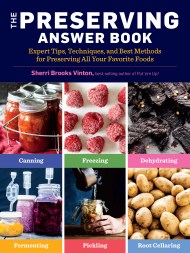Promotion
Sign up for our newsletters to receive 20% off! Shop now. Exclusions apply.
By clicking “Accept,” you agree to the use of cookies and similar technologies on your device as set forth in our Cookie Policy and our Privacy Policy. Please note that certain cookies are essential for this website to function properly and do not require user consent to be deployed.
Homebrewed Vinegar
How to Ferment 60 Delicious Varieties, Including Carrot-Ginger, Beet, Brown Banana, Pineapple, Corncob, Honey, and Apple Cider Vinegar
Contributors
Formats and Prices
Price
$22.99Price
$28.99 CADFormat
Format:
- Trade Paperback $22.99 $28.99 CAD
- ebook $11.99 $15.99 CAD
This item is a preorder. Your payment method will be charged immediately, and the product is expected to ship on or around May 11, 2021. This date is subject to change due to shipping delays beyond our control.
Also available from:
-
"This comprehensive, well-researched collection of recipes and methods reveals the history, versatility, and flavor complexities of this ancient ferment. Whether you're looking for ways to avoid kitchen waste, convert various alcohols to acids, or maximize seasonal abundance, this book provides an approachable guide to the science and magical alchemy of vinegar making. Kirsten Shockey transforms a wide range of ingredients into a unique reflection of time and terroir using universal fruits and ciders, seasonally playful flower blossoms, and even jewel-hued purple sweet potatoes. With additional methods to customize the process, this book will keep your pantry flush with vibrant options for flavor, nourishment, and culinary creativity." - Sarah Owens, author of Sourdough “Homebrewed Vinegar is as scientifically rigorous as it is historically rich. Kirsten Shockey’s elixirs will satisfy curious chefs, home cooks, gardeners, and citizen scientists. She is the real vinegar mother, holding our hand as we discover microbial mysteries and the deliciousness of transformation.” - Dan Barber, Blue Hill "Kirsten Shockey is one of our greatest fermentation educators. Homebrewed Vinegar is as thorough, accessible, and clear as her other wonderful books. This book completely demystifies the process of making vinegar and will surely inspire many fermenting jars in your kitchen." - Sandor Ellix Katz, Author of Wild Fermentation and The Art of Fermentation “Kirsten Shockey continues to inspire and amaze, because she not only teaches us the history, science, and technique of fermented foods, but also somehow manages to make it extra enchanting, through the bold exploration of flavors on the edge of our consciousness. In this way, this book will teach you how to make quality vinegar more thoroughly than almost any modern book on the market, but it will also fill you with creative wonder about an ingredient you may have once taken completely for granted." - Meredith Leigh, Author, The Ethical Meat Handbook and Pure Charcuterie “To say that Homebrewed Vinegar is anything but a fantastically researched, mind blowingly comprehensive, and very approachable book is an understatement. Kirsten does it again with this book, as she has with her previous ones, by showing you all the ins and outs to making vinegar. With her as your guide you’ll be able to make any vinegar that your mind can dream up. She will entangle you with her love for fermentation from the beginning and inspire you to do the same with others. This book definitely holds a prominent space on my bookshelf and will do the same on yours.” - Jeremy Umansky, larder master, author of Koji Alchemy, and owner of Larder Delicatessen Bakery "I'm so excited to see an acid aficionado, such as Kirsten Shockey, show us that there's no limit to what vinegar has to offer—and making acidity accessible to all, at home and abroad.” - Michael Harlan Turkel, award-winning food photographer, cookbook author of ACID TRIP: Travels in the World of Vinegar, and host of The Food Seen podcast on Heritage Radio Network, as well as Food52's Burnt Toast “I adore vinegar and have many bottles of different kinds —even banana vinegar—and quince vinegar is definitely on my list of those to make. I really like Kirsten Shockey’s latest book on brewing vinegar at home—a lot. It’s thorough and considerate and she tells you exactly how to proceed. There’s no reason to think that I—or you— can’t make vinegar too.” - Deborah Madison, author of In My Kitchen and An Onion in My Pocket “With this new book Kirsten Shockey continues her work of helping us understand and harness the power of fermentation. With an eye, and a palate towards ever expanding our tastes and methods this one goes into the canon immediately.” - Harry Rosenblum, author of Vinegar Revival and co-founder of The Brooklyn Kitchen
- On Sale
- May 11, 2021
- Page Count
- 296 pages
- Publisher
- Storey
- ISBN-13
- 9781635862812
Newsletter Signup
By clicking ‘Sign Up,’ I acknowledge that I have read and agree to Hachette Book Group’s Privacy Policy and Terms of Use
